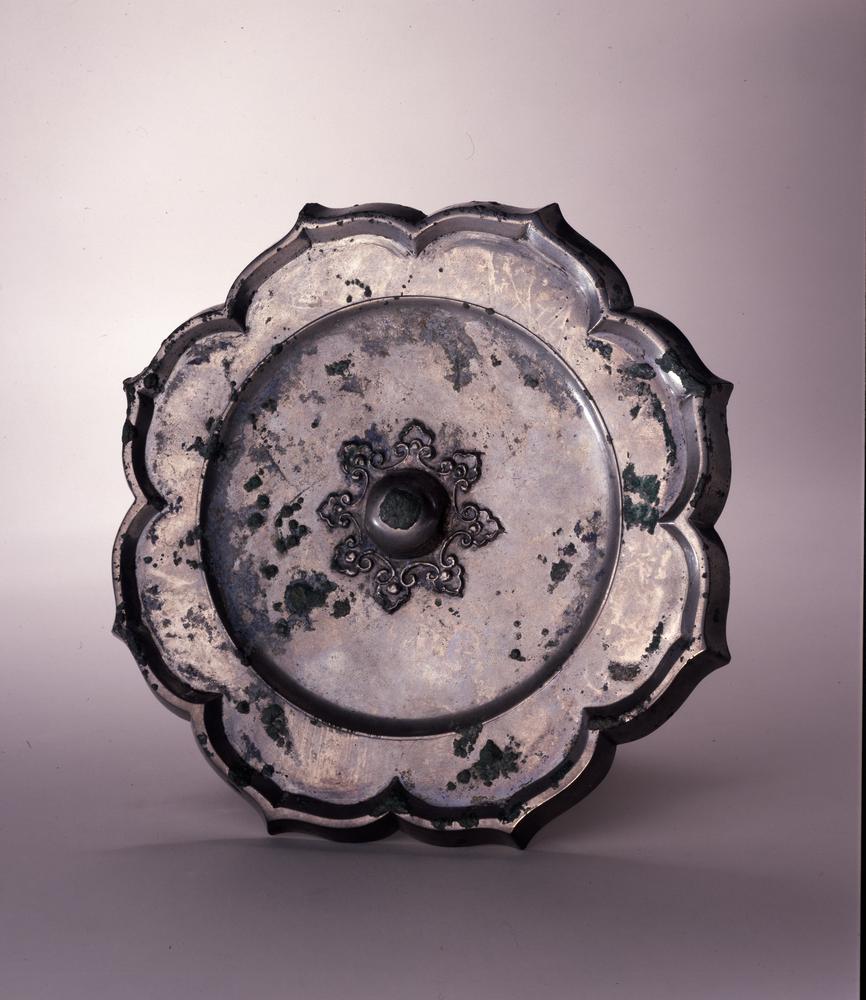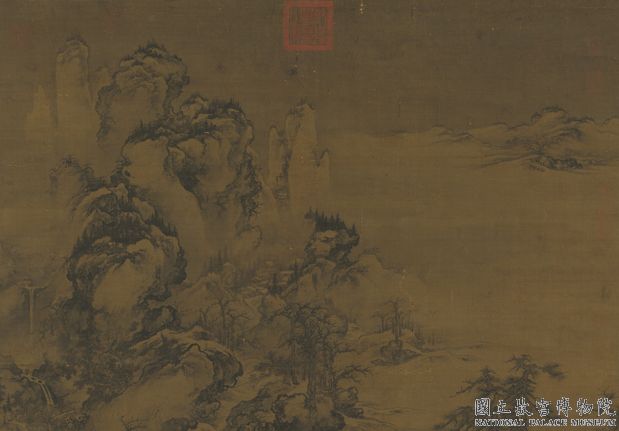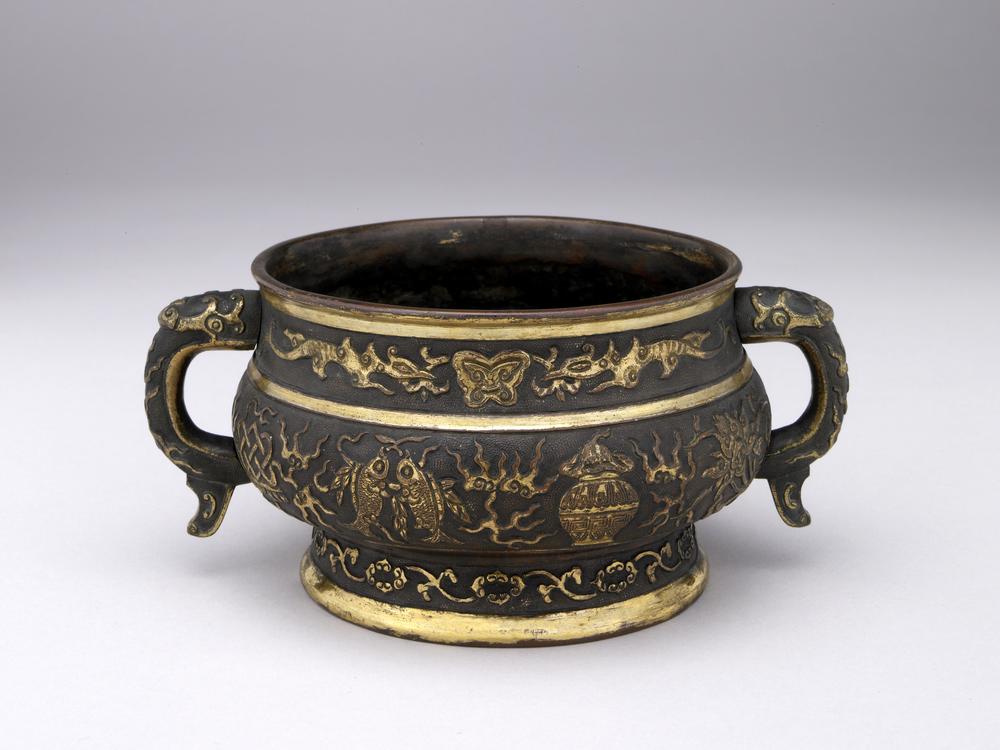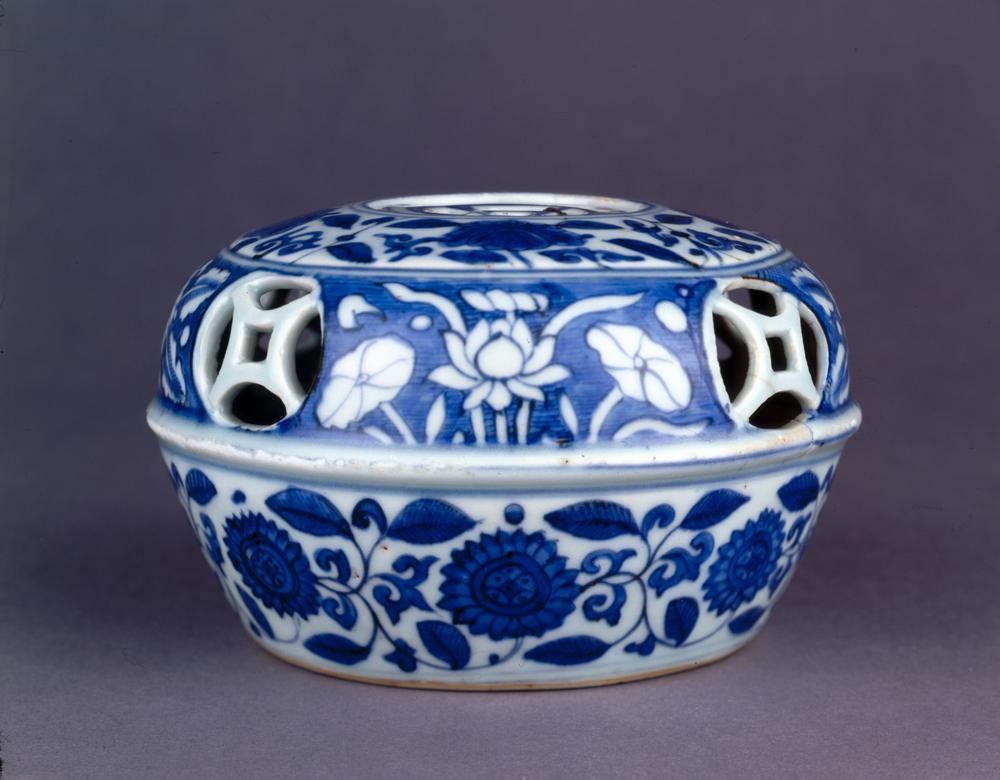Period:Tang dynasty Production date:801-850 (circa)
Materials:paper, 紙 (Chinese),
Technique:painted
Subjects:monk/nun arhat 和尚/尼姑 (Chinese) 阿羅漢 (Chinese)
Dimensions:Height: 43.30 centimetres (Royal mount) Width: 26.10 centimetres
Description:
Travelling monk. Drawing of a monk, identified in the Tibetan inscription as the Arhat Kalika, an early disciple of the Buddha. He is seated on a prayer mat, with a nimbus behind his head, holding an alms bowl. His staff (‘khar gsil) is planted in the ground next to him. Ink and colour on paper.
IMG
![图片[1]-painting; 繪畫(Chinese) BM-1919-0101-0.169.+-China Archive](https://chinaarchive.net/Tang dynasty/Paintings/mid_00000015_001.jpg)
Comments:EnglishFrom Whitfield 1983:This painting is closely related to the two preceding, with the same broad border, Tibetan inscription and similar canopy. The subject is represented as a Chinese traveling monk, seated on a mat, holding a small alms bowl, and with his staff and leather traveling bag beside him. These attributes link him with other monk portraits at Dunhuang, including the drawing shown in Pl. 51. On the other hand, the Tibetan inscription identifies him as one of the Buddha’s traditional early disciples, the arhat Kalika: ’Phags-pa-nan-thos-chen-po’-dus-ldan-’khor-ston-chig [so] go-bzi Do-khon-legs-kyis-bris The sublime arhat the great Dus-ldan (Kalika) with one hundred thousand disciples [so] 94 Painted by Do-khon-legsKalika has been previously identified, although the number of his disciples was given in Serindia as one thousand one hundred rather than the one hundred thousand of the Tibetan. The syllabic notation of the numeral is missing, but the ends of two of the strokes are still clearly visible; evidently the painting was the ninety-fourth in the same series as Pl. 48. In this case, the last part of the inscription clearly states that Do-khon-legs painted the work. Eiichi Matsumoto (1937, pp. 512-15) suggests that he may have been a Tibetan who had come to Dunhuang. Richardson (personal communication) writes that “Do is the clan name (or family name) of many persons named in documents from Dunhuang, often as copyists of religious works. They were apparently all in a somewhat lowly position, never officials, but whether they were Tibetans proper or local people of one of the many different tribes in the area who took Tibetan names it is not possible to say.”The nimbus is of the same type as in the preceding two paintings, narrowly fringed with flame. The face is well drawn, and this together with the rather closely wrapped draperies around the figure suggests a mid-ninth century date. ChineseFrom Whitfield 1983:曾經講過此畫和前兩圖有著密切關係,有相同的寬幅邊、吐蕃文題記和相同的華蓋。畫像表現為中國雲遊僧,坐在墊子上,右手托著小鐵缽,旁邊立著挂革袋的錫杖。從這些標誌,可以看出與圖51所刊登的敦煌高僧像的關係,而根據吐蕃文的記錄,知道此像是早期的佛弟子之一迦理迦尊者。記錄的內容如下: ’Phags-pa-nan-thos-chen-po’-dus-ldan-’khor-ston-chig [so] go-bzi Do-khon-legs-kyis-bris聖大聲聞迦理迦,弟子10萬人94(面)Do-khon-legs繪此有關迦理迦,就如以前解讀的那樣,而有關其弟子的數量,《西域》中則解讀爲“1100人”而非10萬人。序數詞的部分已經殘損,但是末尾的兩個筆劃清晰可見,和圖48一樣,表示的是系列圖中的第94號。在記錄最後出現的Do-khon-legs是此畫的畫家,在本圖中是很明確的。松本榮一博士認爲,此畫家是來敦煌的吐蕃人(參照《敦煌之研究》1937年,512~515頁)。但是,據Richardson講:“Do”是一個宗族的姓,在很多敦煌文書中都留下這個姓,他們是抄寫經典的寫經生,他們沒有顯赫的地位,是吐蕃人,還是冒用吐蕃人姓的當地其他部族,還很難説。頭光被細細的火焰光環繞,和上兩圖的形式相同。面部表情、緊裹身體的衣紋説明是9世紀中葉的作品。
Materials:paper, 紙 (Chinese),
Technique:painted
Subjects:monk/nun arhat 和尚/尼姑 (Chinese) 阿羅漢 (Chinese)
Dimensions:Height: 43.30 centimetres (Royal mount) Width: 26.10 centimetres
Description:
Travelling monk. Drawing of a monk, identified in the Tibetan inscription as the Arhat Kalika, an early disciple of the Buddha. He is seated on a prayer mat, with a nimbus behind his head, holding an alms bowl. His staff (‘khar gsil) is planted in the ground next to him. Ink and colour on paper.
IMG
![图片[1]-painting; 繪畫(Chinese) BM-1919-0101-0.169.+-China Archive](https://chinaarchive.net/Tang dynasty/Paintings/mid_00000015_001.jpg)
Comments:EnglishFrom Whitfield 1983:This painting is closely related to the two preceding, with the same broad border, Tibetan inscription and similar canopy. The subject is represented as a Chinese traveling monk, seated on a mat, holding a small alms bowl, and with his staff and leather traveling bag beside him. These attributes link him with other monk portraits at Dunhuang, including the drawing shown in Pl. 51. On the other hand, the Tibetan inscription identifies him as one of the Buddha’s traditional early disciples, the arhat Kalika: ’Phags-pa-nan-thos-chen-po’-dus-ldan-’khor-ston-chig [so] go-bzi Do-khon-legs-kyis-bris The sublime arhat the great Dus-ldan (Kalika) with one hundred thousand disciples [so] 94 Painted by Do-khon-legsKalika has been previously identified, although the number of his disciples was given in Serindia as one thousand one hundred rather than the one hundred thousand of the Tibetan. The syllabic notation of the numeral is missing, but the ends of two of the strokes are still clearly visible; evidently the painting was the ninety-fourth in the same series as Pl. 48. In this case, the last part of the inscription clearly states that Do-khon-legs painted the work. Eiichi Matsumoto (1937, pp. 512-15) suggests that he may have been a Tibetan who had come to Dunhuang. Richardson (personal communication) writes that “Do is the clan name (or family name) of many persons named in documents from Dunhuang, often as copyists of religious works. They were apparently all in a somewhat lowly position, never officials, but whether they were Tibetans proper or local people of one of the many different tribes in the area who took Tibetan names it is not possible to say.”The nimbus is of the same type as in the preceding two paintings, narrowly fringed with flame. The face is well drawn, and this together with the rather closely wrapped draperies around the figure suggests a mid-ninth century date. ChineseFrom Whitfield 1983:曾經講過此畫和前兩圖有著密切關係,有相同的寬幅邊、吐蕃文題記和相同的華蓋。畫像表現為中國雲遊僧,坐在墊子上,右手托著小鐵缽,旁邊立著挂革袋的錫杖。從這些標誌,可以看出與圖51所刊登的敦煌高僧像的關係,而根據吐蕃文的記錄,知道此像是早期的佛弟子之一迦理迦尊者。記錄的內容如下: ’Phags-pa-nan-thos-chen-po’-dus-ldan-’khor-ston-chig [so] go-bzi Do-khon-legs-kyis-bris聖大聲聞迦理迦,弟子10萬人94(面)Do-khon-legs繪此有關迦理迦,就如以前解讀的那樣,而有關其弟子的數量,《西域》中則解讀爲“1100人”而非10萬人。序數詞的部分已經殘損,但是末尾的兩個筆劃清晰可見,和圖48一樣,表示的是系列圖中的第94號。在記錄最後出現的Do-khon-legs是此畫的畫家,在本圖中是很明確的。松本榮一博士認爲,此畫家是來敦煌的吐蕃人(參照《敦煌之研究》1937年,512~515頁)。但是,據Richardson講:“Do”是一個宗族的姓,在很多敦煌文書中都留下這個姓,他們是抄寫經典的寫經生,他們沒有顯赫的地位,是吐蕃人,還是冒用吐蕃人姓的當地其他部族,還很難説。頭光被細細的火焰光環繞,和上兩圖的形式相同。面部表情、緊裹身體的衣紋説明是9世紀中葉的作品。
© Copyright
The copyright of the article belongs to the author, please keep the original link for reprinting.
THE END
![[Qing Dynasty] British female painter—Elizabeth Keith, using woodblock prints to record China from the late Qing Dynasty to the early Republic of China—1915-China Archive](https://chinaarchive.net/wp-content/uploads/2022/11/image-191x300.png)




